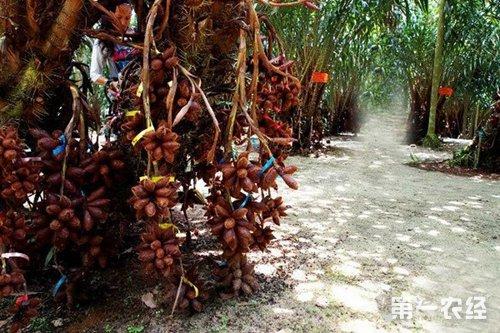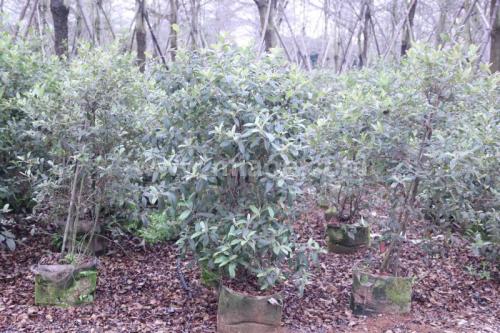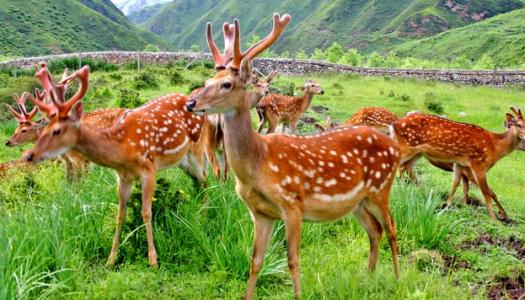How much is the price of the picture of snakeskin fruit? Is snakeskin fruit easy to raise? introduction to planting techniques
How does snakeskin fruit grow?
Snakeskin fruit, also known as salat, is a famous fruit in Southeast Asia. It grows on trees, pointed at the top and rounded at the bottom, with a reddish brown skin the size of an egg, similar to avocado.

How much is snakeskin fruit?
The price of snakeskin fruit in each place is different. On Taobao, it is almost 22-28 jin. Snakeskin fruit planting technology:
1, seedling: snakeskin fruit seedling methods have two kinds of sprout seedlings and seed seedlings. 2. Afforestation: First select a piece of forest land suitable for snakeskin fruit and plant it in it. Management: basically no irrigation is needed below 600 m above sea level, and there is no problem of cold damage. Generally, fertilizer is applied twice a year, 1~2 kg per plant each time, respectively in dry season (March to August) and rainy season. 4, pest control: snakeskin fruit plantation pests and diseases are few, more serious pests are a beetle, mainly to the roots of food, can lead to plant death. Rabbit urine can be used for prevention and control.
Snakeskin fruit plants relatively small, often dioecious, plants clustered, short stemless, spiny; leaves pinnatisect, pinnae lanceolate or linear-lanceolate, s-shaped or falcate; inflorescences borne on leaves, male inflorescences heteroecious, male inflorescences branched, bearing several catkin-like cylindrical branches, racemes and branches enclosed in persistent spatholes, male flowers borne in pairs in axils of spathlets (bracts), usually accompanied by hairy bracteoles;
Calyx and corolla tubular, 3-lobed; stamens 6, inserted at corolla orifice, filaments short, base broadened; female inflorescences less branched than male inflorescences, but larger; female flowers inserted in pairs or solitary, larger than male flowers; bracts 2; neutral flowers accompanied by female flowers, only 1 bract; calyx tubular at base, upper part 3-lobed; corolla ca. as long as calyx or slightly longer, upper part 3-lobed; staminodes 6; Ovary 3-carpelled, 3-ovule, incompletely 3-loculed, flattened smooth or erect spiny scales, style short, stigmas 3.
Fruit spherical turbinate or ovoid, apex with residual stigma, exocarp thin, with imbricate reflexed scales, smooth or spiny scales apices, mesocarp thin, endocarp not obvious; seeds 1 ~3, oblong spherical or obtuse triangular, fleshy testa thick, sour or sweet, endosperm uniform hard, with holes from the apex, deeply invasive testa, embryo basal.
There is also a kind of snakeskin fruit from Thailand, which is a bit longer. The flesh looks a bit like durian. The core is bigger, but it tastes very good. Occasionally, you can see it in a fruit shop, but the price is not cheap. Note that snakeskin fruit shell is very hard but very thin, peel must be careful, it is easy to cut fingers! Snake skin fruit crisp flesh, ripe sweet, yellow flesh and durian similar, a little sour taste, like the taste of distiller's grains, but very delicious. The flesh without ripeness is whiter and tastes sweet and sour. Specific taste buyers to try their own, can be said to be difficult to describe more special! A catty of quantity in about 8!
Snakeskin fruit likes tropical humid climate, high temperature and humidity are important for its growth and development
Conditions. The most suitable conditions for growth are that the average annual temperature is higher than 22℃, the average temperature in the coldest month is above 18℃, and the relative humidity is above 85%.
About 14 species worldwide, distributed in tropical Asia such as India, Indochina Peninsula and Malay Archipelago. Indonesia is the most successful country in germplasm resources, cultivation techniques and local market development of snakeskin fruit. China is distributed in the west of Yunnan Province. It has been introduced sporadically and planted in South China for more than 50 years.
Time: 2019-05-05 Click:
- Prev

Can myrtle be planted in a large area? What soil is suitable for growing myrtle and what are the conditions?
Myrtle is a wild plant, but because it has a wide range of uses, many people want to plant it, but the question is whether it can be planted on a large scale. If possible, what conditions do you need to grow it? How to plant it?
- Next

Is there any prospect for sika deer farming to make money? where is the market? How much is the sika deer?
With the rise of consumption level, people are more and more picky about eating, in which game, such as pheasants, peacocks, sika deer and so on, are very popular, and it is precisely because of this, it has also ignited a trend of characteristic breeding. Sika deer is one of them, but can sika deer breeding make money after all?
Related
- Fuxing push coffee new agricultural production and marketing class: lack of small-scale processing plants
- Jujube rice field leisure farm deep ploughing Yilan for five years to create a space for organic food and play
- Nongyu Farm-A trial of organic papaya for brave women with advanced technology
- Four points for attention in the prevention and control of diseases and insect pests of edible fungi
- How to add nutrient solution to Edible Fungi
- Is there any good way to control edible fungus mites?
- Open Inoculation Technology of Edible Fungi
- Is there any clever way to use fertilizer for edible fungus in winter?
- What agents are used to kill the pathogens of edible fungi in the mushroom shed?
- Rapid drying of Edible Fungi

